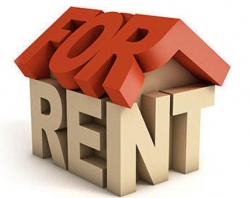Demand in Private Rental Sector Continues to Rise
Research conducted by several major financiers, including BDRC, shows that demand for private properties to rent continued to rise in the first quarter of 2016. This climb is a continuation of a trend we’ve been seeing for the last three to four years since the UK started to recover from the credit crunch. There have been ebbs and flows, slow-downs of growth and the occasional plateau, but we are now seeing record prices set for rental property across the UK, and a significant factor in that increase is increasing demand.
It is true that a recent change to stamp duty, which came into effect o April 1st of 2016 and almost exclusively targeting buy-to-rent property owners, may have driven a surge in demand over the first quarter as buyers sought to beat the new charges. However, since April 1st demand has slowed in growth, not decreased overall, and continues to rise.
Between 2002 and 2012, privately rented homes increased by 96%, almost doubling from 2,512,000 homes in the UK to 4,920,000. 40% of the landlords who were surveyed by Paragon Mortgage reported that demand for rental properties had increased in the first half of 2015. The vast majority of those landlords felt that this was a strong trend, and one that they expected would continue.
Why the rise in demand?
A survey of over 1,800 private rental tenants and landlords, undertaken by Paragon Mortgages, reveals high levels of satisfaction among tenants. The Director over at Paragon Mortgages, John Heron, notes that this rise in demand is part of a trend that can be traced back much further than the credit crunch (also known as the global financial crisis). For as long as twenty years, the UK has seen decreasing numbers of families and individuals living in social housing, and a corresponding increase in the private rental sector.
The private rental sector has suffered in the past from bad public relations stemming from a minority of dissatisfactory landlords and the myth that more private rental properties on the market prevents people from buying their first home.
Heron is glad to see such a high degree of overall tenant satisfaction, and praises the work of good landlords. Heron also points out that despite the negative press received by the private rental sector, it continues to provide affordable and appropriate housing for many who don’t wish to or cannot buy their own homes.
It seems the private rental sector is experiencing a renaissance of approval from all sides. According to the survey results, landlords are increasingly capable of providing long term housing solutions, and at a professional and socially responsible standard.
One in Five Homes
Over the last twenty years, several factors have increased the reasons for people to shift away from the old home-owner-occupier trend and toward rental instead. The government and property market managers introduced policies during the 1980s that were more neutral toward both types of housing tenure, and the effects of those policies have since been
magnified further by undersupply of housing (of all types) and increasingly expensive first-home costs.
Thirty or forty years ago, it was common that people in their early twenties could afford to begin to climb the housing property ladder. This is no longer true, but there are more factors than just affordability or supply – people increasingly live between cities, travel abroad for significant periods of leisure, work or research, and invest more of their cash-flow into experience rather than bricks and mortar.
The private rental sector offers the mercurial gen-x and gen-y demographic and easier way to have stability and security in their home for as long as they want it, without going through the effort of buying and selling. Although credit checks and character references are generally required for rental, the process of finding and signing for a rental property is drastically quicker and simpler than buying and selling. Additionally, as a renter you are locked into a rental price for the duration of your stay, subject to inflation, and don’t have to worry about a fall in property prices if you plan to move on shortly.
The changing face of the private rental sector
The private rental sector recently overtook the social housing sector. This hasn’t been the case since the 1960s. The sector has definitely changed as it has grown, but it is hard to deny that less people in social housing situations is a good thing.
One of the big drivers of the increase of private rental, as well as the increase in demand for privately rented homes, is the increased success of the buy-to-rent property market. Until April 1st of this year, taxation policies very much favoured buyers with a portfolio of properties over buyers who were setting out to buy their first home. The recent stamp duty changes have sought to redress that bias, but the added charges shouldn’t seriously put off anyone with a decently performing rental portfolio.
How is the demand being addressed?
Property experts are generally pleased about the increased demand as a sign of a robust and strengthening property market that seems to have fully recovered from the global financial crisis. However, property experts also insist that more needs to be done about the provision of affordable homes across all types of property tenure.
The property development sector, alongside the government, need to come up with a long-term strategy to address the chronic shortage and build more affordable homes. Policies to ensure that this happens are essential, since there are always landlords, property management companies, real estate agents and commercial developers who stand to benefit in the short term from too much undersupply.
More competition, and more landlords who own a single buy-to-rent property will be parts of the solution alongside bold public policy. Although demand has increased acutely of late, the private rental sector has increased immensely over the last twenty to years to meet demand, and as it has grown we have seen improved standards and choice for tenants.
Source website The House Shop
























